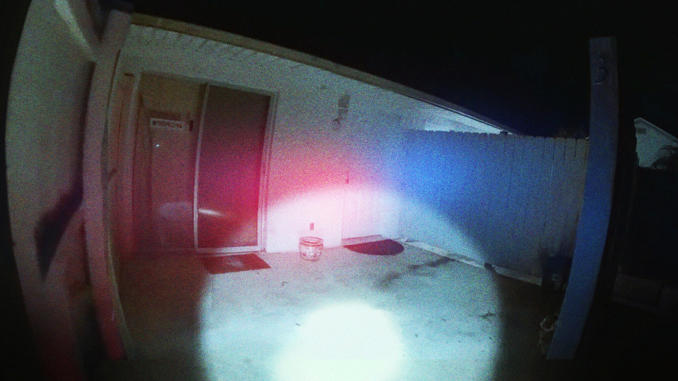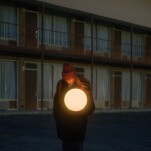The Perfect Neighbor Presents a Mundane Murder in Infuriating Slow Motion

The overwhelming impression one takes away from The Perfect Neighbor, director Geeta Gandbhir’s lauded Sundance documentary that makes its streaming premiere this Friday on Netflix, is how thoroughly, maddeningly mundane every element is of its central crime. Wait a week or two, thumb through the national newspapers, and you’ll come across another case just like this one. A fractious neighborly relationship; a local pariah who just couldn’t leave well enough alone in their obsessive meddling in the lives of anyone within earshot, and one night where it all finally went terribly wrong. An impotent police force that handwaved the brewing threat, time and time again, assigning equal weight to the complaints of an entire neighborhood and a single, clearly delusional person. And a justice system that inherently stacks itself in favor of protecting a privileged aggressor rather than the victim they killed. Gandbhir didn’t choose to make a documentary feature about this case because it was sensational or unique, but because it was so blandly indicative of a decidedly American brand of cultural decay. What she presents is stark, horrifying, and infuriating on multiple levels.
It’s also, at times, borderline exploitative–perhaps because it simply has to be in order to affect the kind of change the filmmaker would like to see, although its level of intimate and painful access is also simultaneously a condemnation of the police viewpoint that is central to the film’s novel style of presentation. We see what the police see in the course of this story, and they see way too much, becoming disembodied observers of moments where the police have absolutely no business being present. In this procession of outrages, it’s just one more outrage that can be a little too easily overlooked.
The Perfect Neighbor’s footage takes place over the course of about two years, chronicling (again, from police body cams, dash cams, interrogation rooms, etc.) the elevation of a series of neighbor squabbles from merely unreasonable to actively murderous. On one side, we have the residents of a residential stretch of small, rented homes in suburban Ocala, Florida–a blend of average, seemingly lower-income folks and plenty of children of all ages and races running underfoot outside, playing basketball and football; a place where it feels like the pace of life would typically be relatively placid. That is, if not for the street’s one supreme busybody resident, the kind of person who seemingly hunkers down day and night at the front window to scan their lawn and ensure that no one coughs on a blade of grass. From the moment we meet the perpetually angry 58-year-old Susan Lorincz, who most of the neighborhood kids seem to refer to as “the Karen,” we know that she’s going to be the problematic crux around which the aggravation (and eventually the tragedy) revolves.
Indeed, if you wrote a character like Susan into your fictional screenplay, you’d probably be criticized for drawing the caricature of white entitlement and victimhood a little too bluntly. She’s a perfect storm of offense-seeking egomania, constantly finding manufactured reasons to call 911 and summon police to the premises, typically because the local kids have ventured a bit too close to her door as they play in the large, vacant space next to her home. When the cameras aren’t around, neighborhood residents describe Susan as viciously racist, aggressive and belittling toward anyone coming close to her fiefdom, especially the kids … but of course, as soon as the police arrives the woman is ready to wield her victimhood like a cudgel, implying that the entire neighborhood is essentially embroiled in a vast conspiracy against her. To the police, she’s shrinking and pathetic, pleading for assistance and pity even as she contradicts herself or seems to get caught up in pointless lies. Gandbhir’s hands-off approach and lack of narration or talking head interviews means we don’t always get basic answers or fact-checks to the questions that inevitably arise here–Lorincz at one point in her rambling, for instance offhandedly claims to be a doctor, which seems odd for someone living in a rundown rented abode, who regularly claims to be desperate to leave. The documentary doesn’t chime in on this kind of detail in one way or the other, but it certainly seems likely from context that it’s just one more lie among many.
Of course, we know from the opening moments of The Perfect Neighbor that violence and tragedy are our trajectory, and the bill finally comes due in an incident in which Lorincz calls 911 yet again to complain about the neighborhood kids, only to then become embroiled in what she claims is a dangerous confrontation with Ajike “AJ” Owens, mother of four, who lives across the street in the two minutes after the initial call was made. Incensed at some aspect of the argument Lorincz had been having with the kids, Owens marched across the street to bang on Lorincz’s door … only to be immediately shot through the door by Lorincz, who calls 911 yet again and claims that Owens had been attempting to kill her. It’s the foundation of a “she said, she said” legal defense that sees Lorincz attempting to fall back on Florida’s stand-your-ground laws to justify Owens’ slaying, arguing that her fear justified her use of deadly force even though Owens wasn’t actually in her home.
-

-

-

-

-

-

-

-

-

-

-

-

-

-

-

-

-

-

-

-

-

-

-

-

-

-

-

-

-

-

-

-

-

-

-

-

-

-

-

-








































